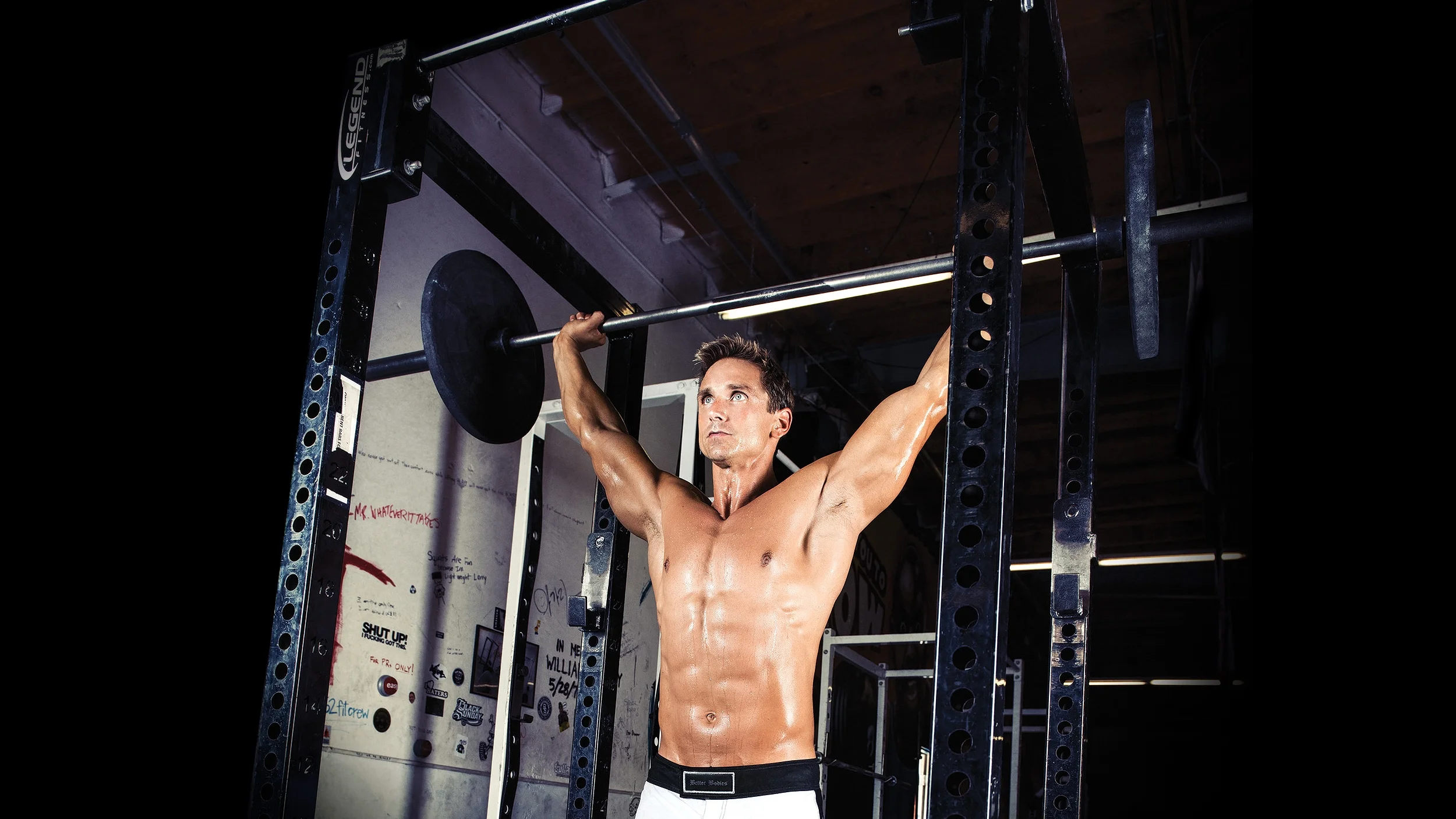Master Your Overhead Press With The Foam Roller
Dr. Joel Seedman, Ph.D.
As many of you know I’m a huge fan of the foam roller but not for the purpose of foam rolling or soft tissue work. In fact I use it exclusively to modify exercises and make them more effective or challenging. If you’re unfamiliar with the chest presses, glute bridges, pullovers, squats, inverted rows, planks, lunges, knuckle pushups, and more I’ve written about, and how to apply the foam roller method to them, check out my website as I have numerous articles on these.
With that said, I’ve recently found that strategically applying the foam roller to overhead pressing variations not only increases the difficulty of the movement but also helps enhance mechanics and clean upper overhead pressing technique.
Here are several advantages of using the foam roller for overhead presses as I demonstrate in the video.
1. The overhead press while seated on a foam roller is actually a more low-back friendly variation of the popular Z-press. While I’m a huge fan of the Z-press, the compact torso angle and extreme hip flexion position can periodically cause low back and hip discomfort in some populations. Sitting on the foam roller helps to resolve this due to the less extreme hip flexion angle. Here's what the traditional Z-press looks like as demonstrated by one of my NFL athletes Bryce Jones.
2. One of the most common problems on overhead presses is learning how to position your center of gravity throughout while also producing optimal t-spine extension. This often creates issues where the individual is either overly upright (not enough t-spine extension) which places excessive tension on the glenohumeral joint and rotator cuff or the individual overly extends at their lumbar spine (leaning back too much) thereby placing undue stress on their low back. Performing overhead presses while seated on the foam roller helps to resolve this issue.
Essentially if you’re too upright or are too extended you’ll feel like you’re going to roll off the foam roller and lose control of your body position. Simply put it teaches you to find the perfect balance of torso placement, t-spine extension, and spinal positioning. While sitting on a stability ball can produce a similar effect, the foam roller is even more sensitive to anteroposterior deviations in weight distribution and body shifting which further helps teach proper pressing mechanics. With that said I highly recommend using a spotter when performing these to ensure you don’t slip off the foam roller.
3. Learning to brace your core and recruit your abdominal musculature during overhead presses is critical not only for maximizing motor control and overall load but also for minimizing stress to the low back. The overhead press while seated on a foam roller helps cue the lifter to recruit their abs as a means of stabilizing the load and their body.
4. This is a surprisingly intense overhead press that requires precise levels of motor control and muscle activation from head to toe. As a result the shoulders, upper back, triceps, and core get pummeled. However the lifter will be able to use substantially lighter loads relative to other presses to produce this effect. Simply put this is a very suitable overhead pressing variation for individuals with shoulder injuries due to the intense levels of activation yet reduced loading parameters.
Other Variations
The seated foam roller press can be performed by placing the roller on a bench as demonstrated by one of my NFL athletes Larry Pinkard.
Similar to the floor variation this also helps improve torso and spinal positioning on overhead presses. For individuals who find it awkward to sit on the floor due to the more extreme levels of hip flexion, this one can feel a bit more natural. Just be prepared to brace your core like crazy as the level of motor control and overall stability required to dial these in is quite intense.
It’s also a great way to warmup your overhead press for your heavy shoulder days as it helps groove the proper neural pathways required for precise overhead presses and military pressing variations. Don’t be surprised if your shoulders feel unusually scorched after these as the lifter will be required to use smooth and controlled form resulting in greater constant tension and metabolic stress to the targeted musculature. With this in mind it’s also a great finisher for your delts.
The foam roller overhead press can be combined with multiple variations including overhead barbell presses, kettlebell presses, bottoms up variations, single arm presses, and more.





































